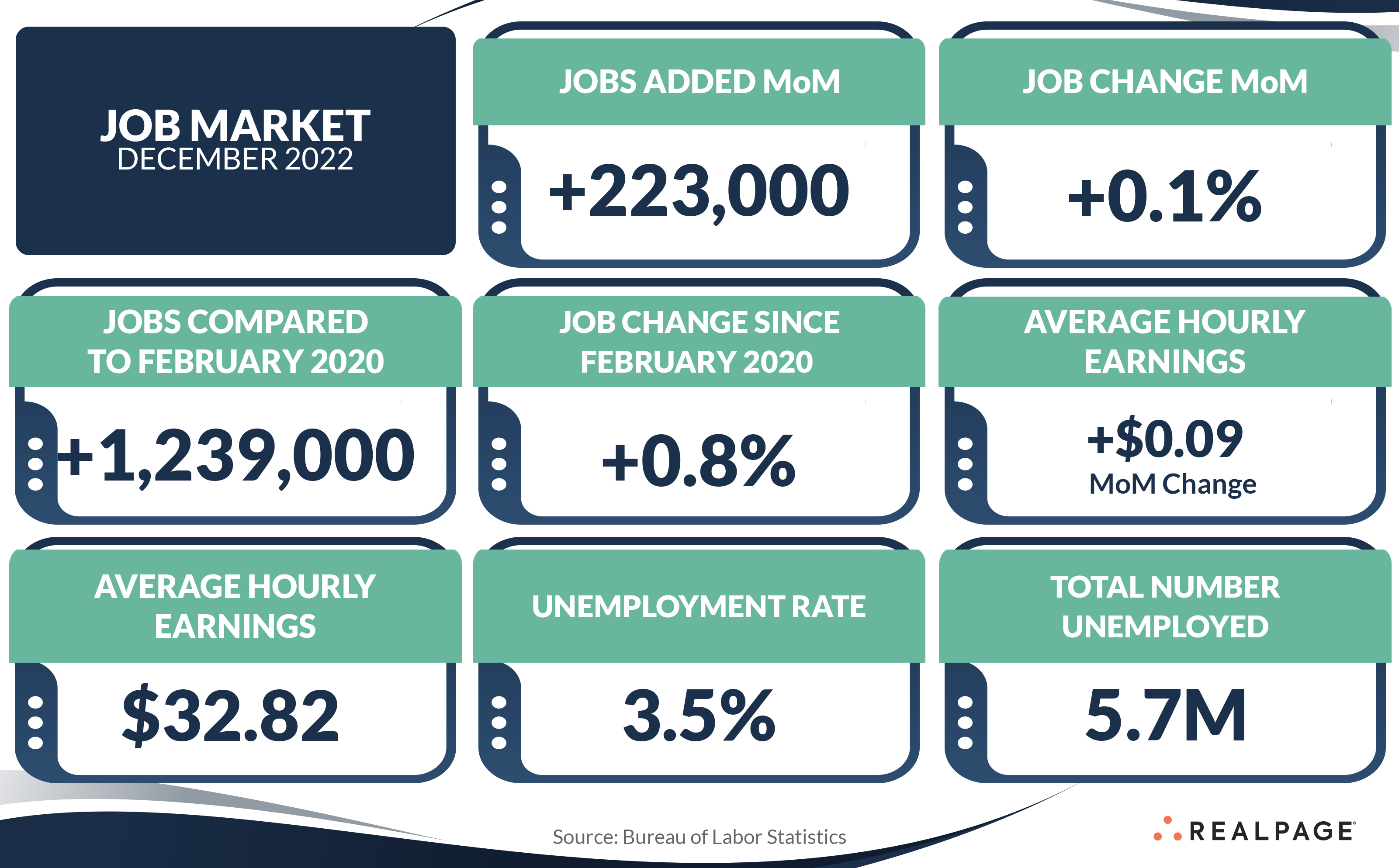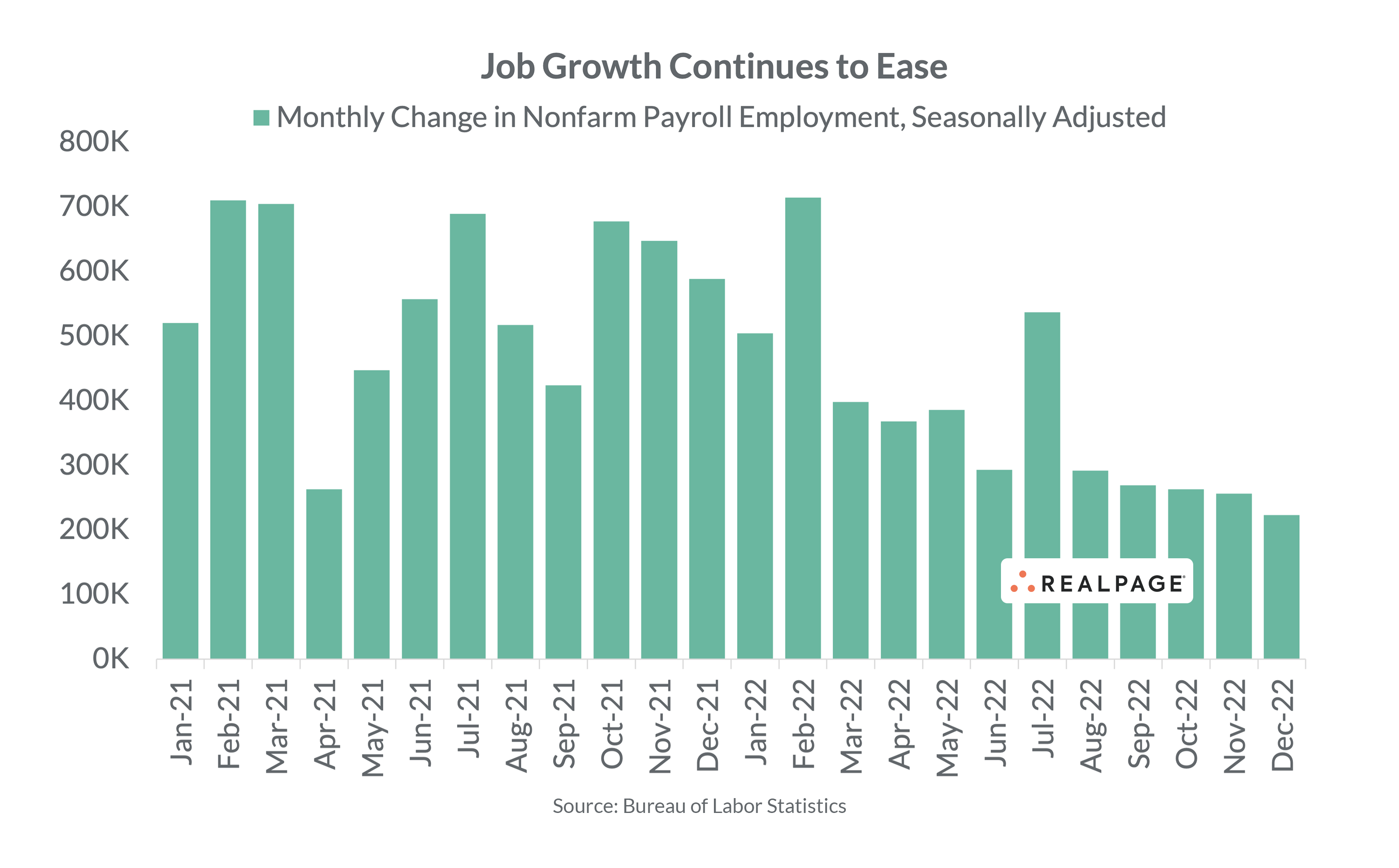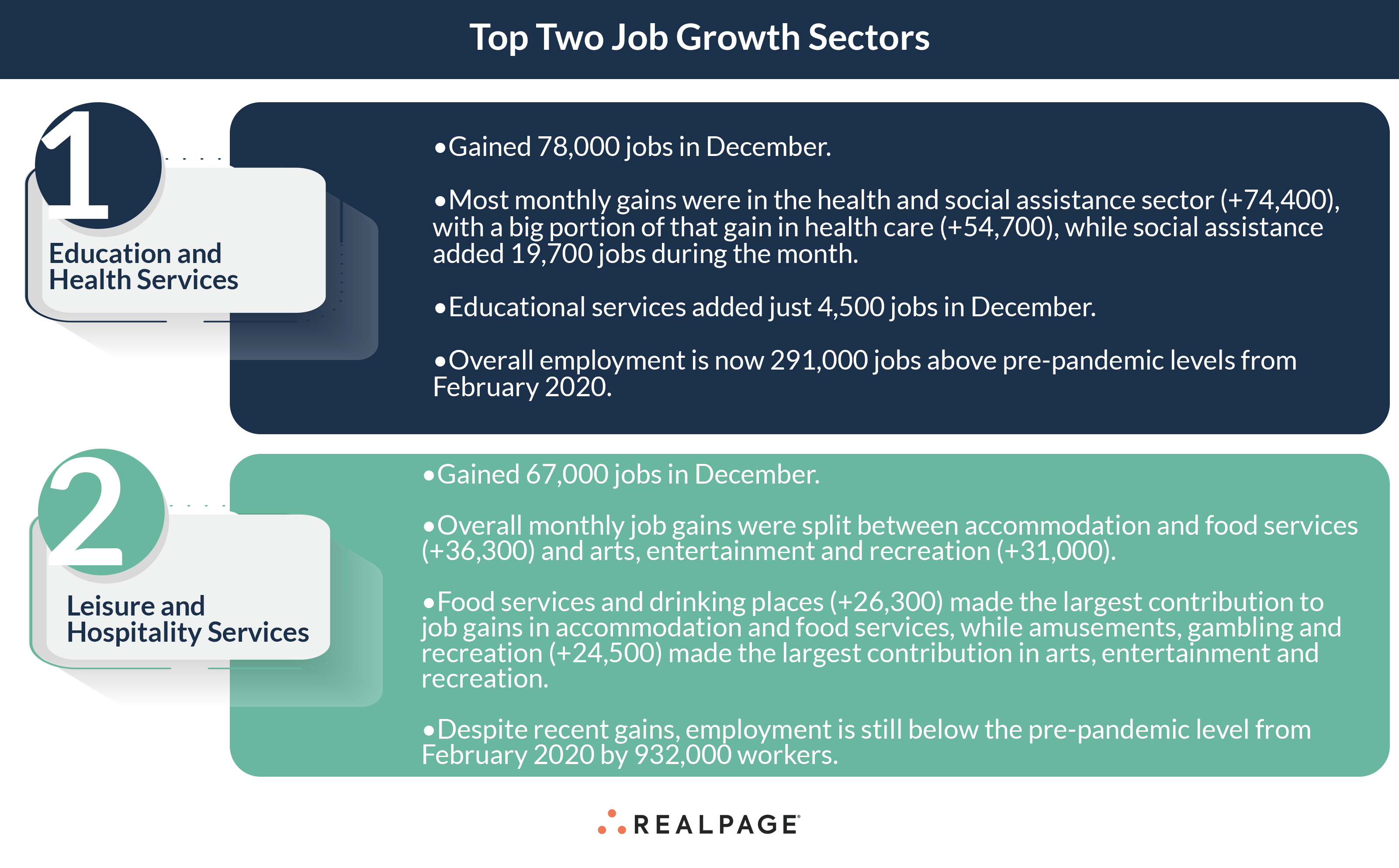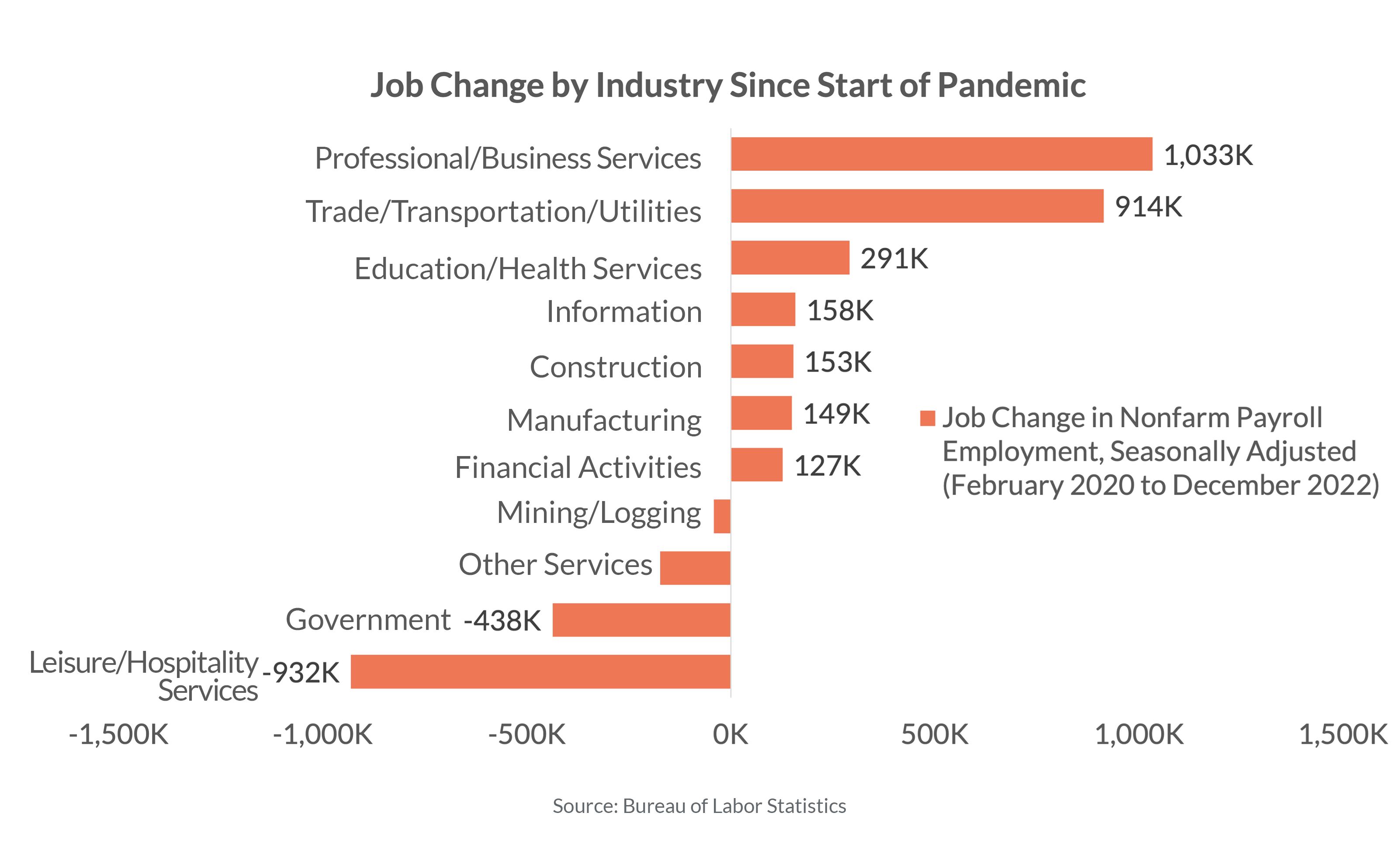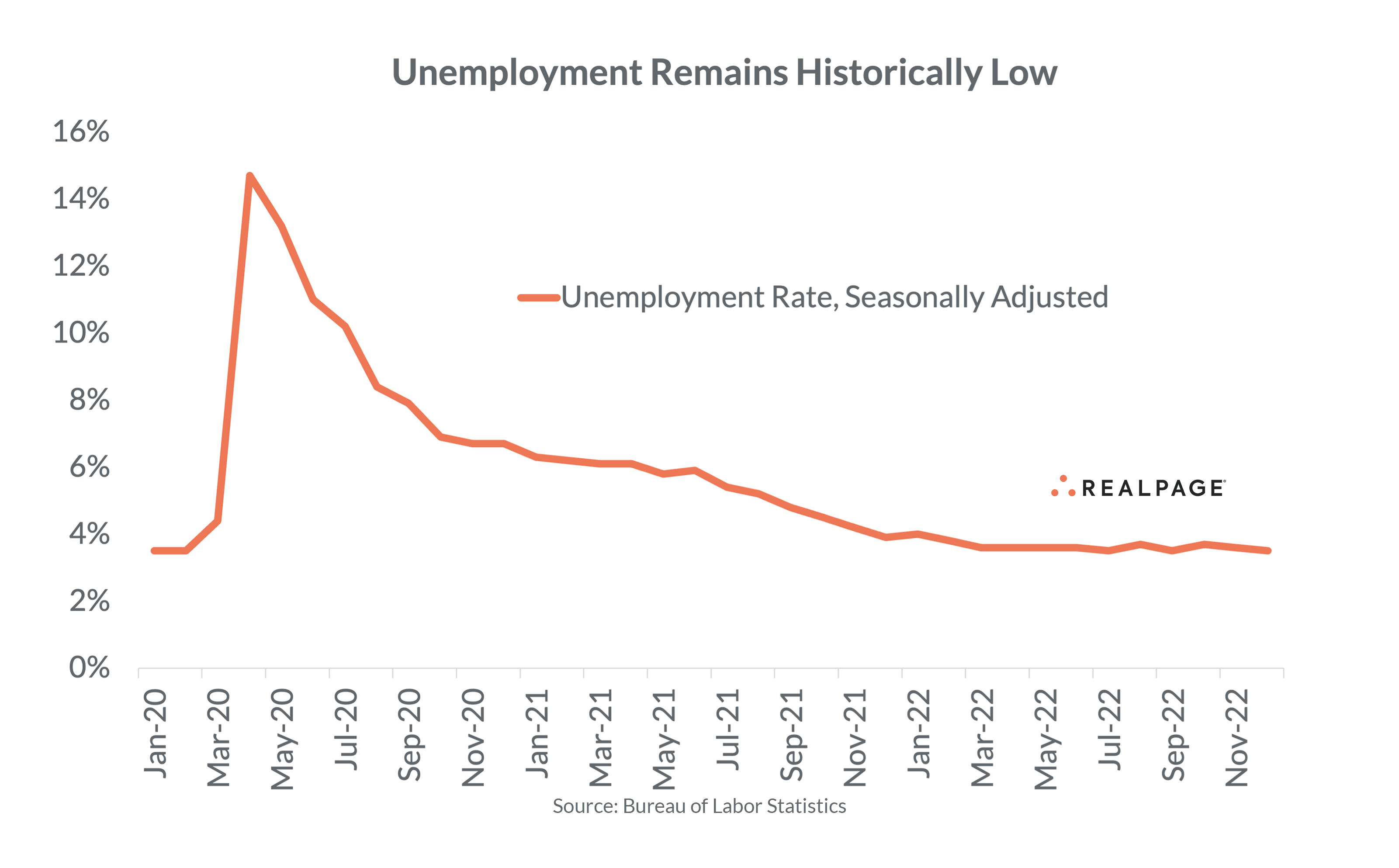The red-hot U.S. job market is showing signs of cooling amid rapidly rising interest rates. While U.S. job growth continued to ease in December, it remains strong by historical standards, registering well above pre-pandemic norms. In addition, the unemployment rate remains at record lows.
Roughly 223,000 employees were added to payrolls in December 2022, according to the Bureau of Labor Statistics (BLS). That was a better result than the 200,000 jobs economists were projecting for the month. The number of jobs added in December was the nation’s weakest monthly performance since December 2020 when the number of jobs shrank. However, the recent job gains were still well above the average of around 190,000 jobs added each month from 2015 to 2019.
For 2022 overall, the nation gained more than 4.5 million jobs, a 3% year-over-year increase. That was the second-highest annual total (after 2021) in records that go back to 1940.
Downward revisions to October 2022 data showed 21,000 fewer jobs were added than previously reported, down to 263,000 jobs. The November 2022 job growth number was revised down by 7,000 jobs, to 256,000 jobs.
The U.S. economy has recovered all the net jobs lost during the COVID-19 pandemic. As of December, the nation had over 1.2 million more jobs (+0.8%) compared to the pre-pandemic employment level from February 2020.
Jobs by Industry
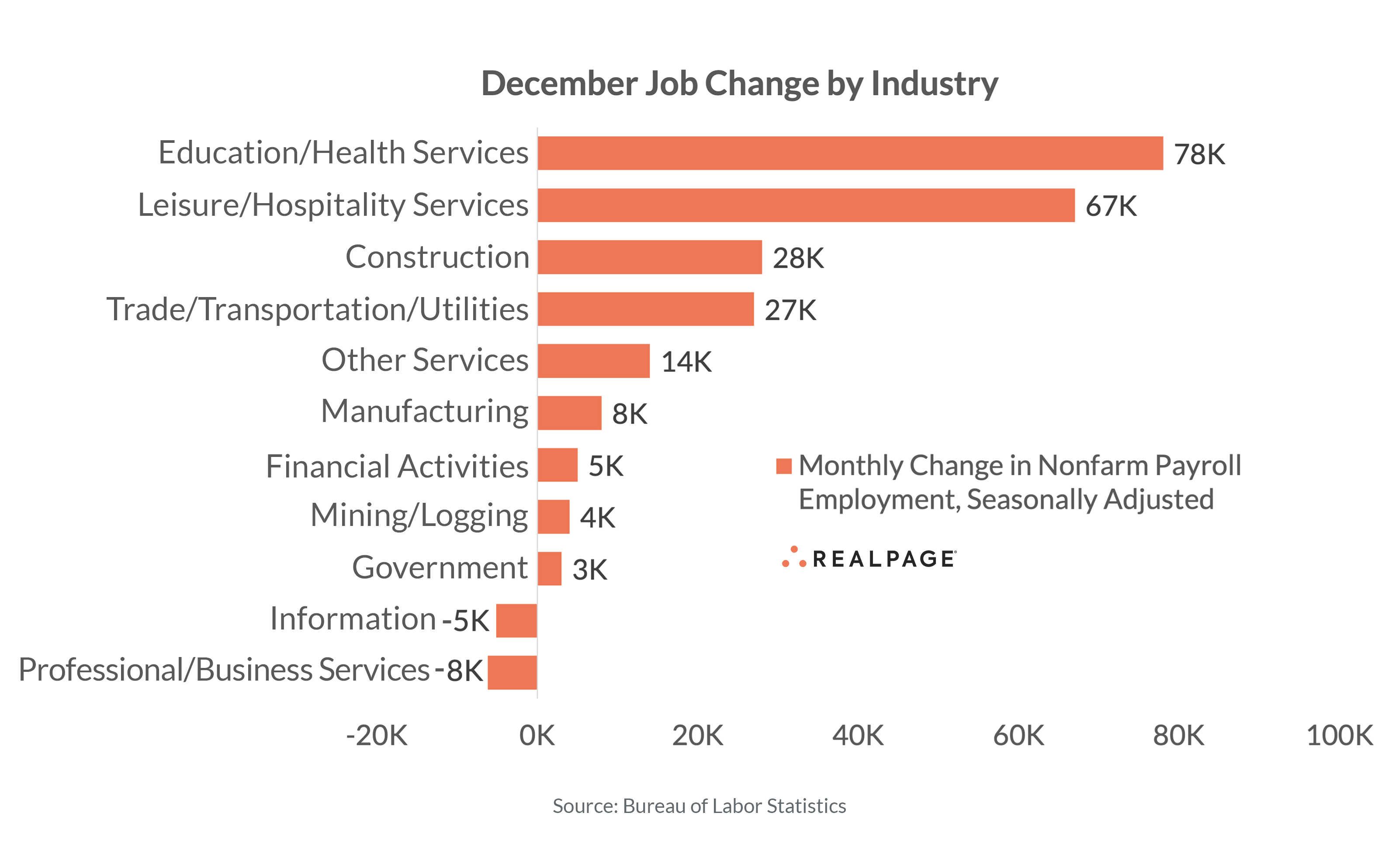 Most major employment sectors gained jobs in December. The biggest monthly job gains occurred in Education and Health Services and Leisure and Hospitality Services. Professional and Business Services and Information were the only major industries to record job losses during the month.
Most major employment sectors gained jobs in December. The biggest monthly job gains occurred in Education and Health Services and Leisure and Hospitality Services. Professional and Business Services and Information were the only major industries to record job losses during the month.
Most job sectors have recovered all the jobs lost during the COVID-19 pandemic downturn. Professional and Business Services has seen the best recovery, with today’s job count coming in over 1 million positions ahead of February 2020 numbers. Trade, Transportation and Utilities is also well ahead of pre-pandemic norms, with employment up by 914,000 jobs.
On the other hand, some of the harder-hit sectors remain below pre-pandemic job counts. Despite recent gains, employment in the Leisure and Hospitality Services sector is still well below its pre-pandemic employment count, by roughly 932,000 workers. The Government sector is about 438,000 jobs behind February 2020 levels. Other job sectors yet to recover all jobs lost during the COVID-19 downturn are Other Services and Mining and Logging.
Unemployment
The unemployment rate (U3 or headline unemployment rate) edged down from 3.6% in November to 3.5% in December. The unemployment rate has been in a narrow range of 3.5% to 3.7% since March and has not fallen below 3% since 1953. At the onset of the pandemic, the unemployment rate climbed to 14.7% in April 2020. Prior to the pandemic, the unemployment rate ranged from 3.5% to 5.7% from 2015 to 2019, averaging 4.4% during that period.
The total number of unemployed in the U.S. decreased to roughly 5.7 million in December.
The unemployment rate for adult men decreased 20 bps from November to December, dropping to 3.1%. The unemployment rate for adult women decreased 10 bps, falling to 3.2%. Meanwhile, the unemployment rate for teenagers decreased 90 bps from 11.3% in November to 10.4% in December.
Across 12 major industries, unadjusted unemployment rates decreased in half. Unemployment decreased 120 bps in Mining to 1.9%. Manufacturing also recorded a notable downturn of 90 bps, with the December unemployment rate registering at 1.8%. On the other hand, the biggest increases were in Financial Activities (up 70 bps to 2.6%) and Construction (up 50 bps to 4.4%).
The highest industry unemployment rates (not seasonally adjusted) in December were in Leisure and Hospitality Services (5.4%), Construction (4.4%) and Transportation and Utilities (4.0%). The lowest unemployment rates were in the Government (1.7%), Manufacturing (1.8%) and Mining (1.9%) sectors.
Average Hourly Earnings
Average hourly earnings among employees on private nonfarm payrolls rose by $0.09 from November to December. That monthly increase took average hourly earnings to $32.82 in December. On an annual basis, average hourly earnings were up $1.44, a 4.6% increase year-over-year. However, wages were outstripped by inflation, as the Consumer Price Index (CPI) rose 7.1% in the year-ending November.
Wage growth over the past year varied greatly by industry. Among major industries, Leisure and Hospitality Services workers led with average hourly wages jumping 6.4% year-over-year in December. Information employees closely followed with a 6.3% annual increase. On the other hand, the smallest year-over-year increase in hourly wages was seen among Other Services employees (1.9%).








